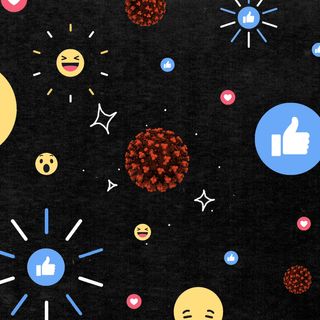In her piece ‘Bangs Are Not an OK Hairstyle for Adults,’ writer Diana Tourjee writes, “Bangs are the conclusion an eight-year-old would come to if asked to get their hair out of their face. It’s like if you wanted more light in your room, so you cut a hole in the curtain.”
While opinions may differ aesthetically, Tourjee offers an insight into one of our most-loved and most-ribbed coping mechanisms – getting bangs. As tropes from scores of films, television, books, Tiktoks, and resultant cultural aping will tell you, when we’re emotionally vulnerable, an aesthetic change like getting bangs is the equivalent of cutting a hole into a curtain to let the light in, as compared to the far more taxing work of fixing what’s within.
Though getting bangs is traditionally viewed as a woman’s crisis haircut domain, men reign over going bald. However, since this isn’t the medieval age, these can be interchangeable and spread out along the gender spectrum. Though who gets what hairstyles may change, the haircuts themselves remain classic indicators of an emotional SOS. We’ve been conditioned into immediately joking about or wanting these haircuts as soon as a crisis hits. This can be seen in the number of people stuck in quarantine around the world who have either considered cutting their bangs or shaving their heads or who have already done it and graduated to the Immediate Regret phase.
Related on The Swaddle:
For Women, a Shaved Head Isn’t About Getting Attention; It’s About Being Seen
“An external change can be a simple and easy way to signify a transition that is internally more complex and harder to articulate otherwise,” Nikki Nachum, a therapist, told Allure. “A new haircut becomes almost like an announcement to both yourself and the outer world that something is changing in your life.” It’s human nature to crave a physical change that matches the magnitude of an emotional one, to correct that cognitive dissonance with a fresh cut or color.
In quarantine, when we’re all low due to the various degrees of enforced loneliness and boredom, a physical change we make can act as a substitute for stimuli from the outside world. For some, it is also a way to receive attention on online platforms, because offline validation, including social contact, is now an endangered commodity.
However, the only problem with this particular universal coping mechanism is that the stakes are way too high — at least for our egos. When even Liz Lemon from 30 Rock suffered under the featherweight of a professionally cut set of bangs, imagine what horrors our amateur, scissor-toting fingers could inflict upon ourselves? Vidhi, a senior stylist at Happy in the Head, a Mumbai-based salon thinks that a combination of extremely simple-looking internet tutorials and a lack of knowledge about hair texture and flow are the main culprits. “Different bangs/fringes work for different face types. Also, the way it’s cut makes a lot of difference, which is why every amateur will mess it up usually, as they lack the technical know-how of cutting hair.”
For people who prefer to shave their heads, the frustration of maintaining longer hair also adds to their need for an aesthetic change, according to Vidhi. She claims that she is receiving more requests for hair consultations from male clients than female clients, because their hair is commonly short and grows out quicker, which she believes will also lead to failed home haircuts.
One thing’s for certain – when this pandemic decides to pack up and go home, we’re all emerging from our caves with haircuts botched enough to start an entirely new trend, only to do it all over again when the next crisis erupts. As for the stylists, when asked how she’s bracing for this large scale hairstyle massacre, Vidhi says, “Oh I’m dreading it!” She adds, “It’s hair; it grows, so we should be fine!”




